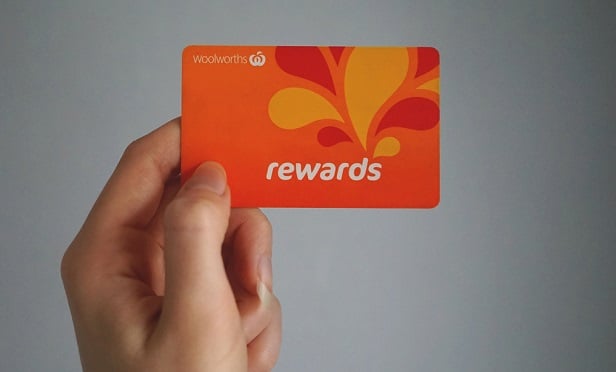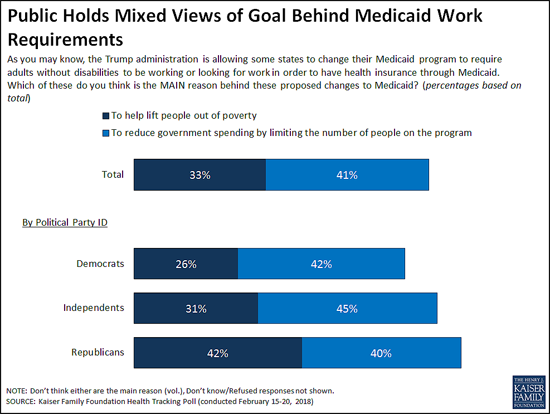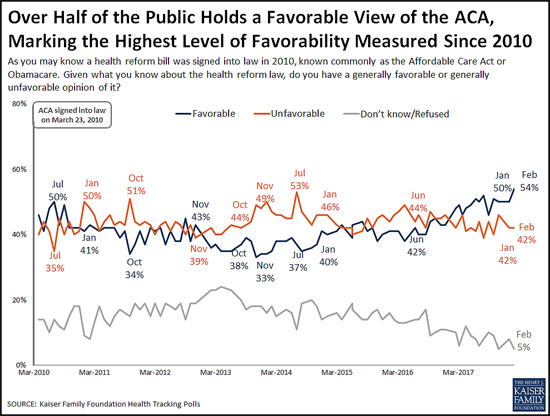10 perks that help attract and retain workers
Job seekers and employees today have more control over their careers than ever before. Leaving current positions for better opportunities, and being more selective when applying for a new job, are now commonplace.
With the war for talent in full effect, companies of all sizes have had to take a close look at their compensation and employee benefits to ensure that they meet, or preferably exceed, expectations.
While keeping up with the latest employee benefits trends is one great way to maximize benefit plans, employers should also explore additional employee and workplace perks to help with recruiting, retention and engagement.
1. Free snacks and coffee
 (Photos: Shutterstock)
(Photos: Shutterstock)
An often-overlooked way to enhance the workplace is to provide employees with complimentary snacks and coffee. Not only does this help employees save a few dollars each day, but office snacks have shown to increase workplace production. And offering employees healthy alternatives can get people more energized and involved with a company’s overall wellness program.
2. Flexible work schedules
 One of the biggest trends in the business world has been a shift away from the traditional 9 to 5 work day. While some positions require such a schedule, more and more companies are enabling employees to have more flexibility with their working hours. As a matter of fact, many businesses are including flexible working schedules in their job descriptions and on career sites to help attract younger job seekers. As work-life balance continues to become more important to employees, flexible working schedules can be valuable perk for employers to offer.
One of the biggest trends in the business world has been a shift away from the traditional 9 to 5 work day. While some positions require such a schedule, more and more companies are enabling employees to have more flexibility with their working hours. As a matter of fact, many businesses are including flexible working schedules in their job descriptions and on career sites to help attract younger job seekers. As work-life balance continues to become more important to employees, flexible working schedules can be valuable perk for employers to offer.
3. Working from home
 While telecommuting is becoming more common, not all employees can exclusively work-from-home. However, enabling employees to work at home on occasion can be a great perk for keeping employees happy and engaged. Providing employees with the tools and resources necessary to work from home when needed can greatly assist with lowering turnover, and can also help reduce stress and improve the employee experience.
While telecommuting is becoming more common, not all employees can exclusively work-from-home. However, enabling employees to work at home on occasion can be a great perk for keeping employees happy and engaged. Providing employees with the tools and resources necessary to work from home when needed can greatly assist with lowering turnover, and can also help reduce stress and improve the employee experience.
4. Employee assistance programs
 A greater focus on employee wellness – both physical AND mental – is occurring in companies big and small. One way to help with this initiative is to have an employee assistance program (EAP). These programs provide counseling to employees for both professional and personal issues, and can include consultations with licensed clinicians for financial and legal services, grief counseling, and day-to-day support for full-time employees and anyone in their household.
A greater focus on employee wellness – both physical AND mental – is occurring in companies big and small. One way to help with this initiative is to have an employee assistance program (EAP). These programs provide counseling to employees for both professional and personal issues, and can include consultations with licensed clinicians for financial and legal services, grief counseling, and day-to-day support for full-time employees and anyone in their household.
5. Company events
 You have probably seen or heard of Fortune-500 companies throwing elaborate and expensive events for their workforce. While small employers can’t do something to this level, having company-sponsored events throughout the year is a great way to boost employee morale and build a culture. These events also present an opportunity to boost employer branding and recruitment marketing efforts. Things like company picnics, holiday parties, and even individual team outings (such as a bowling night) help to boost company morale.
You have probably seen or heard of Fortune-500 companies throwing elaborate and expensive events for their workforce. While small employers can’t do something to this level, having company-sponsored events throughout the year is a great way to boost employee morale and build a culture. These events also present an opportunity to boost employer branding and recruitment marketing efforts. Things like company picnics, holiday parties, and even individual team outings (such as a bowling night) help to boost company morale.
6. Employee referral programs
 Hiring the best talent is a mission all companies have in common. But with recruiting more challenging than ever, it can be difficult to accomplish this goal. However, establishing an employee referral program (especially one that provides a cash or bonus reward) is a fantastic way to get your entire company involved with recruiting. These programs also help employees feel more invested in their organizations, especially if they can bring friends or professional colleagues to their organization.
Hiring the best talent is a mission all companies have in common. But with recruiting more challenging than ever, it can be difficult to accomplish this goal. However, establishing an employee referral program (especially one that provides a cash or bonus reward) is a fantastic way to get your entire company involved with recruiting. These programs also help employees feel more invested in their organizations, especially if they can bring friends or professional colleagues to their organization.
7. Lunch and learns
 Learning and development is important to employees. While investing in large-scale programs and bringing in industry experts on a routine basis may not be possible, each company has their own subject-matter-experts who can provide learning opportunities to their co-workers. A monthly lunch and learn session can be a great way to inform the entire company on new initiatives and projects, as well as boost employee engagement throughout the company.
Learning and development is important to employees. While investing in large-scale programs and bringing in industry experts on a routine basis may not be possible, each company has their own subject-matter-experts who can provide learning opportunities to their co-workers. A monthly lunch and learn session can be a great way to inform the entire company on new initiatives and projects, as well as boost employee engagement throughout the company.
8. Employee discounts
 Another great additional perk that employees will enjoy are discounts on certain items or events. Discounts on items like clothing brands, tech, Broadway shows, sporting events, and many others can help employees save money while enjoying things that they enjoy. These types of perks are becoming increasingly popular, even for smaller employers and can be a great tool in recruiting. Not to mention the role they play with employee happiness, engagements, and ultimately retention.
Another great additional perk that employees will enjoy are discounts on certain items or events. Discounts on items like clothing brands, tech, Broadway shows, sporting events, and many others can help employees save money while enjoying things that they enjoy. These types of perks are becoming increasingly popular, even for smaller employers and can be a great tool in recruiting. Not to mention the role they play with employee happiness, engagements, and ultimately retention.
9. Summer hours
 We discussed earlier about the value of flexible work schedules. A fantastic addition to an already popular perk, giving employees summer working hours are a great way to boost happiness and morale. For example, many companies let employees leave the office early on Fridays to get a head start on their weekend plans. With work-life balance becoming more important, this simple perk can be a great for current and future employees alike!
We discussed earlier about the value of flexible work schedules. A fantastic addition to an already popular perk, giving employees summer working hours are a great way to boost happiness and morale. For example, many companies let employees leave the office early on Fridays to get a head start on their weekend plans. With work-life balance becoming more important, this simple perk can be a great for current and future employees alike!
10. Employee rewards and recognition
 Boosting employee engagement and the overall employee experience are critical objectives for all companies today. An excellent way to help with these goals are to recognize and reward employees throughout the year. Whether it’s completing a difficult or important project, reaching certain milestones with the organization (such as years of service), or completing outside education, these can all be extremely valuable for the individual and the company. Additionally, providing rewards along with recognition can go a long way to building engaged culture and a great employer brand.
Boosting employee engagement and the overall employee experience are critical objectives for all companies today. An excellent way to help with these goals are to recognize and reward employees throughout the year. Whether it’s completing a difficult or important project, reaching certain milestones with the organization (such as years of service), or completing outside education, these can all be extremely valuable for the individual and the company. Additionally, providing rewards along with recognition can go a long way to building engaged culture and a great employer brand.
Source: Altiero M. (3 April 2018). "10 perks that help attract and retain workers" [Web Blog Post]. Retrieved from Benefits Pro.
You May Want To Rethink Your 'Cultural Fit' Mentality, and Here's Why
Why achieving diversity in tech requires firing the industry’s ‘cultural fit’ mentality
If you have interviewed for a technology job, there’s a good chance the words “culture” and “fit” made an appearance during the phone-screen phase, or in early rounds of interviews. It is no longer enough for a candidate — especially early to mid-career — to arrive to job interviews with a stellar resume and relevant technical skills. They might also have to come with their best “I’m normal and will fit into the overall team culture of this company” outfit on. Over the past decade, the idea of hiring for “cultural fit” has become as important as, and at times superseded, hiring to fit a job description across forward-looking industries, from tech to transportation.
The nuance of this shift may be a cause for concern — especially for a global tech sector in search of a clear route to workforce diversity. Many of today’s tech human resources teams are tasked with recruiting a diverse group of people and retaining star employees. However, they still tend to supplement those pursuits with cultivating a unified office culture. While the industry has largely moved on from using ping pong tables as a recruiting tool, hiring people who pass the Beer Test — an applicant that hiring managers could work with in the office and hang with at happy hour — remains commonplace. Further, hiring based on a hiring manager’s own narrow set of requirements needed to fit their idea of a relatable person opens the door to all sorts of unconscious biases. Taking this recruiting shortcut also raises the bar for candidates from already under-represented groups, including minorities and women.
The main casualties: the pursuit of diversity and business bottom lines. It is true that research-backed conventional wisdom suggests happy workplaces are productive workplaces. What that line of thinking doesn’t account for is the fact that exclusively hiring talent for interpersonal compatibility can negatively impact the quality of work and focus of employees. In other words, employee camaraderie does not equal workplace compatibility. It definitely does not equal workforce diversity. And while a company may benefit from a general aspect of like-mindedness, there’s a great chance that the actual work is suffering due to the lack of diversity — both in people and ideas. Here in Toronto, hiring managers still focus heavily on likeability, which at times can be seen as more important than technical skills. My team and I recently began to see to potential impacts of “cultural fit” as we started to dive into the findings of our new report on the state of talent in Toronto’s emerging tech sector.
—techcrunch.com
6 Steps to a More Effective Performance Management Program
Traditional methods of managing performance aren’t working anymore. Companies are moving away from traditional performance management tools, like annual reviews, to new techniques that emphasize real-time feedback. You know the drill: managers and employees sit down once a year to review performance. These performance reviews assess an employee’s performance on a scale, or give it a numerical rating. And then, in some cases, employees are given a ranking compared to other employees.
A performance system used in figure skating or competitive cooking shows may not be the best way of evaluating employees in the workplace. When it comes to the traditional performance review process, consider: Traditional performance management approaches aren’t effective because they weren’t designed for the current workforce. Today, with a tight labor supply and the nature of work very different from the industrial past, organizations must focus on developing people, rather than rating them. This requires a shift to performance development. Here’s how you as an HR professional can help your management team create a thoughtful performance development plan.
This is important for two reasons: to make the case to management that there is room for improvement in your current performance management system and, later, to provide baseline metrics to which you can compare your system after the shift to performance development. Your audit should ask the following questions: As part of your evaluation, also assess current organizational performance. A shift to performance development will see organizational performance metrics improve, and you want to be able to quantify this improvement.
Let your senior management team know that performance management may no longer be meeting your company’s needs. Two-thirds of companies are shifting from traditional performance management to an emphasis on developing talent and providing continuous feedback. Then present the results of your audit to senior management. What are the areas that need to be improved? Provide examples of how performance development will help improve these areas. For instance, if your employees rarely receive feedback outside of their annual performance review, show how alternatives to the review, such as consistent coaching or monthly or weekly , can provide your employees with regular feedback.
—tlnt.com
Competing for talent in a Gen Z world
As 2018 progresses, HR managers are well advised to start stepping out of their comfort zones. Because Generation Z is beginning to surge into the workplace, forcing the reinvention of everything from benefits to recruiting. Your relevance in the war for talent may hang in the balance.
You’ve been hearing for some time now about the challenge of engaging a multi-generational workforce. But it’s time to think beyond the Millennials, and take a good look at the Gen Zs (born after 1995). They have a whole new set of expectations and values that are forcing employers to re-evaluate how they recruit, retain and, especially, engage their people. Start working on your battle plan in 2018 (and beyond) to avoid losing the talent battles.
They have decided views on how they expect to be treated and managed and how they respond if they don’t think their employer is measuring up. It’s a function of their upbringing in a hyper-connected world. According to Pew Research, only 14 percent of U.S. adults had Internet access in 1995, but that exploded to 87 percent by 2014. Small wonder that for the Zs, it’s the always-on and available tech-enabled connections to networks of people and information that rule. It’s how Zs learn and solve problems and it influences their expectations.
Here’s what it all means for your workplace and how you will need to compete for talent moving forward.
Legacy benefits and old attitudes need replacing now
The Zs aren’t merely connected. They share aggressively. Studies show that if their experiences – with a brand or a product or an employer – are negative, this generation will happily tell everybody about it online, including on Glass Door, a fast growing site that reviews millions of employers. That makes it important to foster a positive culture and work environment, and provide the types of benefits that will attract the Zs, keep them happy and ideally inspire them to spread the word.
To that end, take a long, hard look at your employee benefits: Too many employers still offer legacy employee packages that have changed little in the last two decades. Will they be good enough to woo the Zs and keep them satisfied? In fact, the Zs are motivated by the total deal, not just financial compensation. They want unique benefits that are personalized for them right down to the individual level.
Think about the 22-year-old who’s working in an urban setting, maybe with a pet at home, doesn’t have a lot of time to shop and is saddled with student loans. What are the priorities? A plan offering vision, life or disability insurance? Or a benefits package that provides a personal concierge and maybe dog walker, student loan repayment and an identity theft program, too? Best-of-class employers will offer up a robust mix of traditional and non-traditional benefits that cater to the individual employee’s lifestyle needs.
VR and gamification: Critical tools in winning Gen Z talent
Even as the Zs mature, there’s a trend toward a blending of personal and work lives as outside influences bleed into the workplace. When it comes to virtual reality, this generation of digital natives is enthusiastic over its potential use in the workplace.
There’s been a 250 percent jump in VR companies since 2012 and the technology’s significance is for more than just promoting productivity by connecting people in different locations for virtual meetings. It’s also a good recruiting tool, a way of letting prospective hires “experience” your environment so they are better able to tell before they take a job if it’s right for them.
Gamification is another Z activity that’s bleeding into business and affecting recruitment and hiring. Picture Silicon Valley’s “code-offs,” where prospective developers compete during a set time period to find the best solution to a specific design challenge. The winner gets the job. It certainly makes resume screening seem obsolete by comparison.
This incoming generation has a lot to offer employers who value the kind of fresh perspective it represents. The next big challenge will be reflecting that appreciation in creative approaches to winning and keeping their hearts and minds.
Read the article.
Source:
Barone M. (1 March 2018). "Competing for talent in a Gen Z world" [Web Blog Post]. Retrieved from address https://www.benefitspro.com/2018/03/01/surge-of-gen-z-workers-changing-how-employers-comp/
Two opportunities created by association health plans
The new regulations around association health plans (AHPs) — which loosen restrictions for small businesses, franchises and associations — create two distinct opportunities in the benefits industry.
The first is for brokers, who will be crucial advisors to employers eligible for the new coverage options now available.
The second opportunity is for benefits and HR tech vendors, who will be instrumental in managing the transactional and administrative challenges that would otherwise hinder AHP success.
What challenges do association health plans represent? Let’s consider an example — the Nashville Hot Chicken restaurant franchise.
Let’s say Nashville Hot Chicken has 1,000 franchisees, each with five full-time employees. Before AHP options became available to this organization, these five-employee groups would either have had to pursue small group coverage, or employees would have had to find individual plans.
Both options likely would have been prohibitively expensive for the organization or the employees. With the new AHP regulations, however, these 1,000 franchisees may be able to pull all 5,000 workers together and create a large group benefits plan.
In doing so, they would reap the advantages of collective purchasing, just like large groups do. However, this AHP would not work like a regular group plan.
If a regular group has 5,000 employees, they would all be part of a centrally-operated payroll system and the insurance companies would receive just one check for all of the employees enrolled at the group. But under an AHP of franchisees, all the payroll systems would operate independently, and there is no clear, centralized entity to pay carriers.
This creates a massive administrative headache for Nashville Hot Chicken corporate, as well as all the individual franchise owners. In other words, who is going to manage the AHP?
Here’s where the brokers come in. Employers need brokers to walk them through all the complexities of AHPs, including sourcing carriers, third-party vendors, and compliance needs.
It would also be incredibly impractical to manage 5,000 employees through 1,000 separate businesses without a benefits and HR platform.
But brokers can provide a solution to this challenge by adopting a platform. With a benefits and HR system, the various administrative differences from franchisee to franchisee can be accounted for, while still allowing the 5,000-life group to enroll in the group offering.
By removing the administrative headache, benefits tech makes AHPs a real option for Nashville Hot Chicken. But it also gives the tech-savvy broker a clear leg up on the competition. A broker without a tech solution will be at a severe disadvantage for Nashville Hot Chicken’s business compared to a broker who has a platform.
So as small employers, franchisees and industry associations band together for group coverage, benefits tech can give brokers a competitive differentiator for this new business segment.
Read the article.
Source:
Tolbert A. (1 March 2018). "Two opportunities created by association health plans" [Web Blog Post]. Retrieved from address https://www.benefitspro.com/2018/03/01/two-opportunities-created-by-association-health-pl/
6 Steps to a More Effective Performance Management Program
A performance system used in figure skating or competitive cooking shows may not be the best way of evaluating employees in the workplace. When it comes to the traditional performance review process, consider: Traditional performance management approaches aren’t effective because they weren’t designed for the current workforce. Today, with a tight labor supply and the nature of work very different from the industrial past, organizations must focus on developing people, rather than rating them. This requires a shift to performance development. Here’s how you as an HR professional can help your management team create a thoughtful performance development plan.
This is important for two reasons: to make the case to management that there is room for improvement in your current performance management system and, later, to provide baseline metrics to which you can compare your system after the shift to performance development. Your audit should ask the following questions: As part of your evaluation, also assess current organizational performance. A shift to performance development will see organizational performance metrics improve, and you want to be able to quantify this improvement.
Let your senior management team know that performance management may no longer be meeting your company’s needs. Two-thirds of companies are shifting from traditional performance management to an emphasis on developing talent and providing continuous feedback. Then present the results of your audit to senior management. What are the areas that need to be improved? Provide examples of how performance development will help improve these areas. For instance, if your employees rarely receive feedback outside of their annual performance review, show how alternatives to the review, such as consistent coaching or monthly or weekly , can provide your employees with regular feedback.
—tlnt.com
Boring Little Miracles
From SHRM, this article goes into the importance of "boring little miracles" in the workplace
The success of an organization is often borne on the backs of people performing boring little miracles.
Boring little miracles don’t make headlines. They, perhaps purposely so, fly under the radar, disguised as everyday tasks performed under pressure or work that doesn’t feel like much to the person performing it. People performing boring little miracles get the job done and then pack up and go home like it was no big deal.
But it IS a big deal.
Boring little miracles add up over time. They are the compounding interest of organizational productivity, and they are performed by people who invest early and often. These miracles sneak up on you and can quickly become the expectation rather than the exception.
Boring little miracles are still miracles.
They aren’t jobs or tasks that are easy, they just appear that way because of the person doing the work. Highly experienced and highly trained professionals doing what they do don’t have to sweat the work that other people dread. They just do it.
“Hey, she’s always been good at this stuff”," or “Well, he’s the only one who knows how to do it,” you might hear around the office. But you shouldn’t take it for granted.
Recognize and reward the behavior you want to see more of. Make space for the work that grabs headlines AND the work that doesn’t in your rewards and recognition structure. Pay special attention to the people who prefer to stay out of the spotlight; honor their work and contributions because it is important, not necessarily because it grabs attention.
Make recognition for this work specific. Make it count.
Do it well enough, and your team and organization might just become a boring little miracle itself.
Read the article.
Source:
Escobar C. (26 February 2018). "Boring Little Miracles" [Web Blog Post]. Retrieved from address https://blog.shrm.org/blog/boring-little-miracles
The decline of the employment drug test
Employers are struggling to hire workers in tightening U.S. job market. Marijuana is now legal in nine states and Washington, D.C., meaning more than one in five American adults can eat, drink, smoke or vape as they please. The result is the slow decline of pre-employment drug tests, which for decades had been a requirement for new recruits in industries ranging from manufacturing to finance.
As of the beginning of 2018, Excellence Health Inc., a Las Vegas-based health care company with around 6,000 employees, no longer drug tests people coming to work for the pharmaceutical side of the business. The company stopped testing for marijuana two years ago. “We don’t care what people do in their free time,” said Liam Meyer, a company spokesperson. “We want to help these people, instead of saying: ‘Hey, you can’t work for us because you used a substance,’” he added. The company also added a hotline for any workers who might be struggling with drug use.
Last month, AutoNation Inc., the largest U.S. auto dealer, announced it would no longer refuse job applicants who tested positive for weed. The Denver Post, owned by Digital First Media, ended pre-employment drug testing for all non-safety sensitive positions in September 2016.
So far, companies in states that have legalized either recreational or medicinal marijuana are leading the way on dropping drug tests. A survey last year by the Mountain States Employers Council of 609 Colorado employers found that the share of companies testing for marijuana use fell to 66 percent, down from 77 percent the year before.
Drug testing restricts the job pool, and in the current tight labor market, that’s having an impact on productivity and growth. In surveys done by the Federal Reserve last year, employers cited an inability by applicants to pass drug tests among reasons for difficulties in hiring. Failed tests reached an all-time high in 2017, according to data from Quest Diagnostics Inc. That’s likely to get worse as more people partake in state-legalized cannabis.
“The benefits of at least reconsidering the drug policy on behalf of an employer would be pretty high,” said Jeremy Kidd, a professor at Mercer Law School, who wrote a paper on the economics of workplace drug testing. “A blanket prohibition can’t possibly be the most economically efficient policy.”
Companies are having a hard enough time hiring, with unemployment hovering around 4 percent. “Employers are really strapped and saying ‘We’re going to forgive certain things,’” said James Reidy, a lawyer that works with employers on their human resources policies. Reidy knows of a half-dozen other large employers that have quietly changed their policies in recent years. Not all companies want to advertise the change, fearing it might imply they are soft on drugs. (Even former FBI director James Comey in 2014 half-joked about the need for the bureau to re-evaluate its drug-testing policy to attract the best candidates.)
Why the change? Pre-employment testing is no longer worth the expense in a society increasingly accepting of drug use. A Gallup poll in October found that 64 percent of Americans favor legalization. That’s the most since the company first started asking the question in 1969, when only 12 percent supported changing the plant’s status. Drug tests costs from $30 to $50 a pop, but the potential costs to an employer are far greater than the actual test.
In addition to helping ease the labor market, eliminating drug testing could have even broader benefits for the economy, said Kidd. Employers could hire the best, theoretically most-productive workers, he said, instead of rejecting people based on their recreational habits. Companies have said they lose out to foreign competitors because they can’t find people who can pass drugs tests, a particularly acute problem in the areas most affected by the opioid crisis.
Some jobs, such as those involving the use of heavy machinery, will always require drug tests. Excellence Health still drug-tests any employee working on a government contract, even in states where weed is legal. Companies are also reserving the right to test after an accident or if an employee comes to work notably impaired.
Not all companies are ready to change course. Restaurant Brands International Inc., which owns Burger King, hasn’t altered its corporate marijuana policy, said Chief Executive Officer Daniel Schwartz. Ford Motor Co. still treats pot as an illegal substance, according to a company spokeswoman.
Weed-averse employers have a notable ally: Attorney General Jeff Sessions. A longtime opponent of legalization, Sessions rescinded in January the Obama-era policies that enabled state-legalized cannabis industries to flourish. The uncertainty caused by the Justice Department’s actions may discourage companies from making changes.
Employers can also get discounts on workers’ compensation insurance for maintaining a “drug-free workplace” by, in part, drug-testing workers. But the types of workplaces forgoing pre-employment tests already enjoy relatively small savings. A job in an office setting, for example, won’t have very many workers’ compensation claims, compared to a factory. The money saved by meeting the qualifications for a drug-free zone isn’t worth it.
“We assume that a certain level of employees are going to be partaking on the weekends,” said Reidy, the employment lawyer. “We don’t care. We’re going to exclude a whole group of people, and we desperately need workers.”
Read the article.
Source:
Greenfield R, Kaplan J. (5 March 2018). "The decline of the employment drug test" [Web Blog Post]. Retrieved from address https://www.benefitspro.com/2018/03/05/the-decline-of-the-employment-drug-test/
Strengthening the Relationship between Education and Employers: Johnny C. Taylor, Jr., Appointed Chair of President’s Board of Advisors on HBCUs
From the SHRM CEO, here is his opinion on the newly appointed Chair of President’s Board of Advisors on HBCUs.
Johnny C. Taylor, Jr., SHRM-SCP, president and chief executive officer of the Society for Human Resource Management, was appointed chair of the President’s Board of Advisors on Historically Black Colleges and Universities (HBCUs) at a White House ceremony today.
In accepting the volunteer advisory appointment to the White House Initiative on HBCUs by President Donald Trump, Taylor gave these remarks:
Thank you, President Trump and Secretary DeVos.
I appreciate the trust you have placed in me to chair the President’s Board of Advisors on HBCUs. It has been my life’s work to unleash talent — in all its forms, from wherever it originates.
As CEO of the Society for Human Resource Management (SHRM), I work with employers across the country. No matter their industry, size or longevity, today’s organizations all share the same challenge — closing the skills gap while building diverse, inclusive, engaged workforces.
For each of them, the “War for Talent” will never end and, thanks to this incredibly strong economy we’re experiencing, it is now a way of life. And today, people are an organization’s only competitive edge.
Employers depend on our country’s educational institutions as a reliable source of the multi-faceted talent they need. HBCUs are a critical conduit for this talent. Every year, over 300,000 students turn to these institutions for their education and to prepare them for their careers.
This President’s Advisory Board can be the nexus between higher education institutions and employers. As a CEO (in both non-profit and for-profit businesses), a former Fortune 500 chief HR executive, and someone with over 7½ years of experience in the HBCU space, I am up for this very challenge.
At SHRM, we are the experts on people and work and on building powerfully diverse organizational cultures that drive success. SHRM’s 300,000 members impact the lives of over 100 million people in the American workforce. SHRM is also an experienced academic partner, currently providing human resources curricula through 465 programs on 354 college campuses.
By working together, across all sectors, the HR profession, HBCUs and this Advisory Board can strengthen the relationship between education and employers. This Advisory Board can facilitate this critical relationship and support innovations in work-based learning opportunities for HBCU students. And as the world’s largest human resources association, SHRM can work with CEOs to connect industry to the diverse talent at these institutions.
This Board has an incredible opportunity to highlight HBCUs as wellsprings of the diverse talent American employers want and need today. HR and education, along with the support of this administration, must move together, forward.
Read the article.
Source: SHRM (27 February 2018). "Strengthening the Relationship between Education and Employers: Johnny C. Taylor, Jr., Appointed Chair of President’s Board of Advisors on HBCUs" [Web Blog Post]. Retrieved from address https://blog.shrm.org/blog/strengthening-the-relationship-between-education-and-employers-johnny-c-tay
Ahead of the Midterms, Voters across Parties See Costs as their Top Health Care Concern
From Kaiser Health News is this poll deciphering where the public sits ahead of Midterms. What is there top healthcare concern? Costs. Get all the information in this article.
At a time when the Trump Administration is encouraging state efforts to revamp their Medicaid programs through waivers, the latest Kaiser Family Foundation tracking poll finds the public splits on whether the reason behind proposals to impose work requirements on some low-income Medicaid beneficiaries is to lift people out of poverty or to reduce spending.
The Centers for Medicare and Medicaid Services in January provided new guidance to states and has since approved such waivers in two states (Kentucky and Indiana). Eight other states have pending requests
When asked the goal of work requirements, four in 10 (41%) say it is to reduce government spending by limiting the people enrolled in the program, while a third (33%) say it is to lift people out of poverty as proponents say.
While larger shares of Democrats and independents say the reason is to cut costs, Republicans are more divided, with roughly equal shares saying it is to lift people out of poverty (42%) as to reduce government spending (40%). People living in the 10 states that have approved or pending work requirement waivers are similarly divided, with near-equal shares saying the goal is to lift people out of poverty (37%) as to reduce government spending (36%). This holds true even when controlling for other demographic variables including party identification and income.
In addition to work requirements, five states are currently seeking Medicaid waivers to impose lifetime limits on the benefits that non-disabled adults could receive under the Medicaid program. The poll finds the public skeptical of such a shift, with two thirds (66%) saying Medicaid should be available to low-income people as long as they qualify, twice the share (33%) as say it should only provide temporary help for a limited time.
Substantial majorities of Democrats (84%) and independents (64%) say Medicaid should be available without lifetime limits, while Republicans are divided with similar shares favoring time limits (51%) and opposing them (47%).
These views may reflect people’s personal experiences with Medicaid and the generally positive views the public has toward the current program, which provides health coverage and long-term care to tens of millions of low-income adults and children nationally.
Seven in 10 Americans report a personal connection to Medicaid at some point in their lives – either directly through their own health insurance coverage (32%) or their child being covered (9%), or indirectly through a friend or other family member (29%).
Three in four (74%) hold favorable views of Medicaid, including significant majorities of Democrats (83%), independents (74%) and Republicans (65%). About half (52%) of the public say the current Medicaid program is working well for low-income enrollees, while about a third (32%) say it is not working well.
Most Residents of Non-Expansion States Favor Medicaid Expansion to Cover More Low-Income People
Under the Affordable Care Act, most states expanded their Medicaid programs to cover more low-income adults. In the 18 states that have not done so, a majority (56%) say that their state should expand Medicaid to cover more low-income adults, while nearly four in 10 (37%) say their state should keep Medicaid as it is today.
Slightly more than half of Republicans living in the 18 non-expansion states (all of which have either Republican governors, Republican-controlled legislatures or both) say their state should keep Medicaid as it is today (54%) while four in 10 (39%) say their state should expand their Medicaid program.
Favorable Views of the ACA Reach New High in More Than 80 KFF Polls
The poll finds 54 percent of the public now holds a favorable view of the Affordable Care Act, the highest share recorded in more than 80 KFF polls since the law’s enactment in 2010. This reflects a slight increase in favorable views since January (50%), while unfavorable views held steady at 42 percent.
The shift toward more positive views comes primarily from independents (55% view the ACA favorably this month, up slightly from 48% in January).
Public Remains Confused about Repeal of the ACA’s Individual Mandate
The poll also probes the public’s awareness about the repeal of the ACA’s requirement that nearly all Americans have health insurance or pay a fine, commonly known as the individual mandate. The tax legislation enacted in December 2017 eliminated this requirement beginning in 2019.
About four in 10 people (41%) are aware that Congress repealed the individual mandate, a slight increase from January, when 36 percent were aware of the provision’s repeal.
However, misunderstandings persist. Most (61%) of the public is either unaware that the requirement has been repealed (40%) or is aware of its repeal but mistakenly believes the requirement will not be in effect during 2018 (21%). Few (13%) are both aware that it has been repealed and that it remains in effect for this year.
Costs are Voters’ Top Health Care Concern ahead of the 2018 Midterm Elections
Looking ahead to this year’s midterm elections, the poll finds Democratic, Republican and independent voters most often cite costs as the health care issue that they most want candidates to address.
When asked to say in their own words what health care issue that they most want candidates to discuss, more than twice as many voters mention health care costs (22%) as any other issue, including repealing or opposing the Affordable Care Act (7%). Costs are the clear top issue for Democrats (16%) and independents (25%), and one of the top issues for Republicans (22%) followed by repealing or opposing the ACA (17%).
Designed and analyzed by public opinion researchers at the Kaiser Family Foundation, the poll was conducted from February 15-20, 2018 among a nationally representative random digit dial telephone sample of 1,193 adults. Interviews were conducted in English and Spanish by landline (422) and cell phone (771). The margin of sampling error is plus or minus 3 percentage points for the full sample. For results based on subgroups, the margin of sampling error may be higher.
Read the article.
Source: Kaiser Family Foundation (1 March 2018). "Poll: Public Mixed on Whether Medicaid Work Requirements Are More to Cut Spending or to Lift People Up; Most Do Not Support Lifetime Limits on Benefits" [Web Poll Post]. Retrieved from address https://www.kff.org/medicaid/press-release/poll-public-mixed-medicaid-work-requirements-more-to-cut-spending-lift-people-up-most-do-not-support-lifetime-limits/













